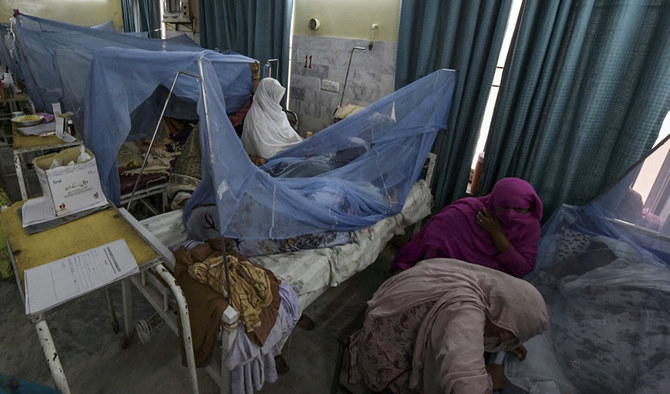ISLAMABAD: More than 100 people contracted the dengue virus in Pakistan's Khyber Pakhtunkhwa province over the last week, health authorities confirmed on Wednesday, prompting authorities to implement preventive measures in all districts of the northwestern region.
Dengue is an illness spread through the bite of an infected mosquito and can lead to death in its most severe form. People affected by dengue go through intense flu-like symptoms including high fever, intense headache, muscle and joint pain, and nausea and vomiting, typically persisting for approximately a week.
Health experts say the illness spreads because of poor hygiene conditions, and heavy monsoon rain provides ideal conditions for dengue-carrying mosquitoes to thrive in stagnant waters.
Data from the Khyber Pakhtunkhwa Health Department on Wednesday showed Peshawar, the provincial capital, had registered the highest count with 22 dengue cases in the past week while Mardan documented 13 cases, Swabi nine, Lower Chitral seven, Bajaur six, Kohat four, and Nowshera three. In addition, Dera Ismail Khan, Khyber, Abbottabad, and Lower Dir had two cases each, while Battagram, Hangu, Torghar, Manshera, Lakki Marwat, and Bannu had one case each.
“Several teams have been formed to prevent the spread of dengue in the province and the situation is being monitored in all the districts,” Dr. Riaz Anwar, adviser to the KP chief minister on health, said in a statement from the health department.
He said health authorities were implementing measures to curb the spread of dengue larvae across all districts and “comprehensive facilities” for patient treatment, including medical personnel and medications, were being made available in households.
“Indoor residual spraying (IRS) for dengue has also been started in the affected areas,” the official added.
According to the World Health Organization, Pakistan is considered an endemic region for dengue, with ongoing transmission throughout the year accompanied by seasonal surges. The mosquito population reaches its peak during the initial rainy season, typically around early June. However, the highest incidence of infections in both mosquitoes and humans occurs several months later, usually in late August.
On June 26, KP’s health department reported that at least 40 cases were reported within a week across the province.
The first case of dengue was registered in Pakistan in 1994. There is currently no cure or vaccine for the virus.

















